We all strive for lasting inner peace—that sense of calm and contentment that transcends the ups and downs of life. Yet true peace eludes most of us. We grasp fleeting pleasures, temporary joys, and material possessions, clinging to them in the hope they will fulfill us. But they never do it for long. There is, however, one simple shift in perspective that can unlock the door to a deeper, steadier serenity.
It is the practice of non-attachment, of letting go of our tendency to cling too tightly to people, outcomes, and things. When we make the conscious choice to loosen our grip and accept life as it unfolds, we discover that the freedom and tranquility we have so long been searching for have been within us all along. Non-attachment is the key that unlocks this potential, enabling us to find lasting inner peace independent of external circumstances.
Table of Contents
Why We Get Attached to People, Possessions, and Outcomes
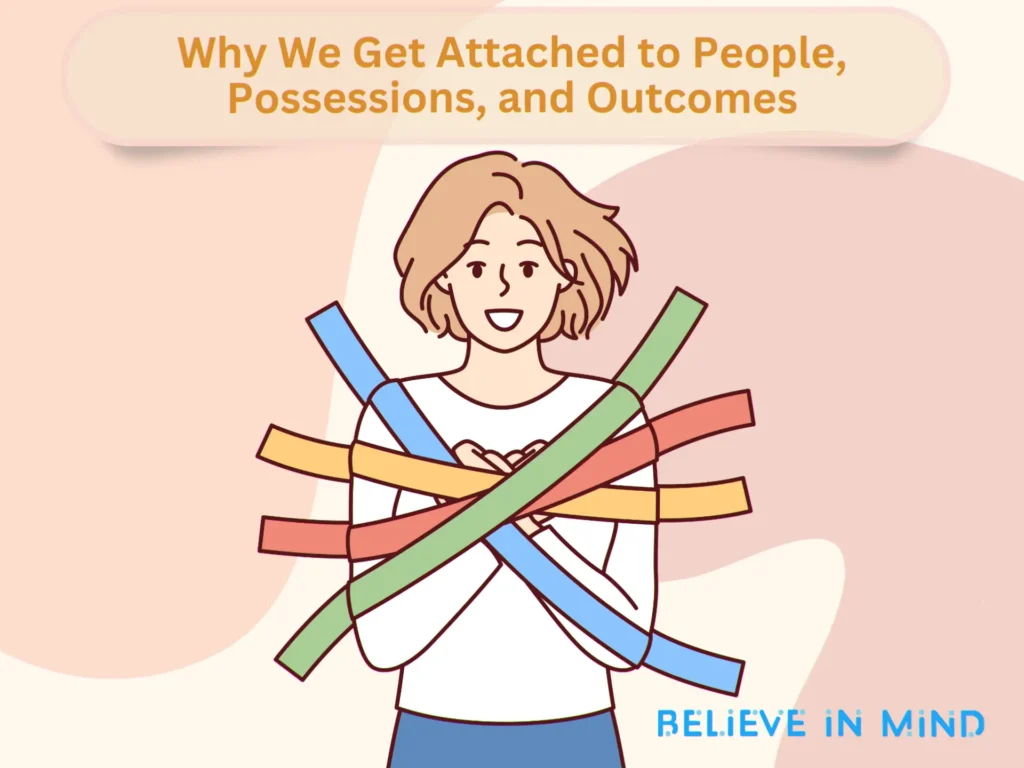
Why do we let ourselves get so attached to people, possessions, and outcomes? It’s human nature. Our happiness depends on the things and people around us, so we cling to them. But lasting inner peace comes from non-attachment.
- We crave security and stability. We think that if we hold on tight to what we have—relationships, money,and status—we’ll be safe and content. But everything changes. People leave, and fortunes rise and fall. True security comes from within.
- We seek pleasure and avoid pain. We attach ourselves to what makes us feel good and push away what makes us uncomfortable. But life brings both joy and suffering. Non-attachment allows us to embrace it all with equanimity.
- Our ego longs for validation. We want to be admired, needed, and accomplished. But self-worth rooted in externals is fragile. Non-attachment helps us see our inherent value, independent of worldly success or the opinions of others.
- We fear the unknown. Attachment to the familiar gives an illusion of control. But the only constant is change. Non-attachment gives us the courage to meet uncertainty with an open heart.
Freedom comes when we release our grip on the impermanent. Non-attachment takes practice, but it holds the key to lasting peace of mind. Let go of your attachments one by one, make friends with change, and find security in the eternal part of yourself that observes it all with wisdom and calm, abiding joy.
The Pain of Attachment: Why Attachment Leads to Suffering
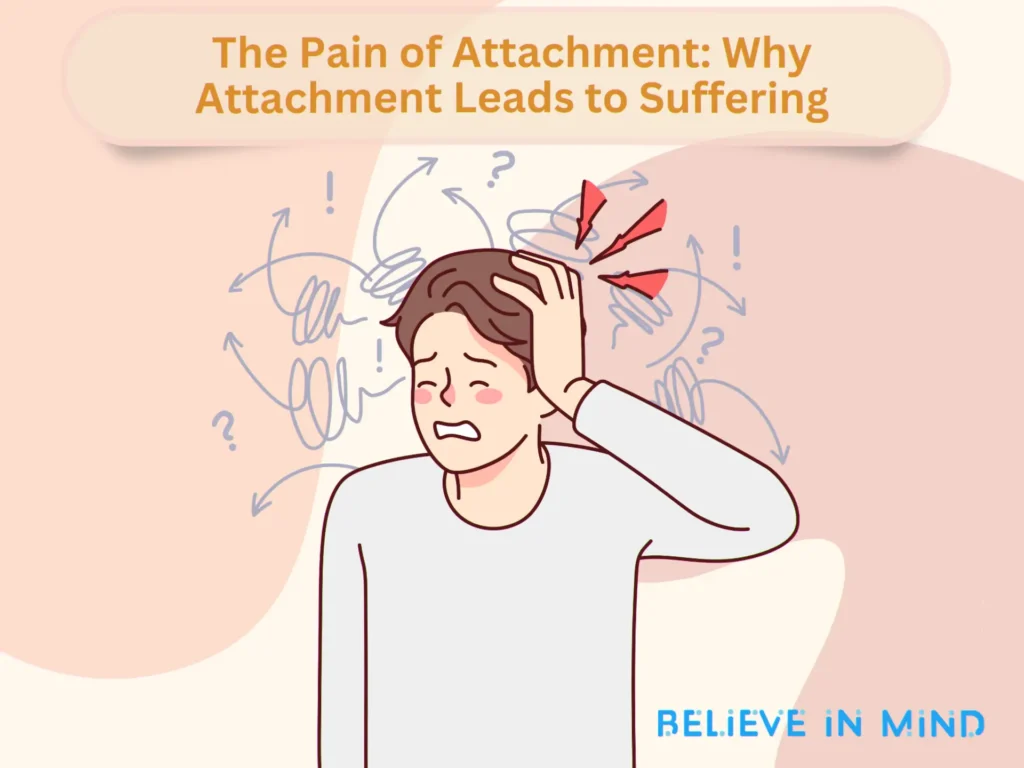
We all crave attachment—to people, possessions, and places. But true inner peace comes from non-attachment. When we cling too tightly to anything, we suffer. We worry it will be lost or taken away. We base our happiness and self-worth on unstable external factors. This attachment leads to jealousy, fear, anxiety, and anger.
- Attachments to relationships can breed co-dependency, jealousy, and control issues. We feel we “need” the other person to be happy.
- Attachments to status or money lead to feelings of inadequacy and “never enough”. There is always someone with more, and we live in constant fear of loss.
- Attachments to outcomes or expectations lead to disappointment and frustration when things don’t go as planned. We suffer over what “should have been”.
The Freedom of Non-Attachment
Non-attachment means holding things lightly with an open hand and heart. We can enjoy relationships, possessions, and experiences without clinging to them. We accept impermanence and go with the flow. This leads to:
- peace of mind. No more worrying, fearing loss, or grasping for control. We accept what comes and what goes.
- Contentment. Our happiness comes from within, not from what we have or what happens around us.
- Compassion. With less attachment to ourselves, we can open our hearts to others and meet them where they are.
Practice non-attachment and find lasting inner calm. Hold all things lightly, and set yourself free.
How Attachment Leads to Suffering
We all want to find inner peace and contentment. However, our attachments to people, possessions, and outcomes often stand in the way. How Attachment Leads to Suffering
As human beings, we have a tendency to grasp onto the impermanent—relationships, material goods, accomplishments, and more. We believe that obtaining or keeping these things will make us happy. But in reality, they are fleeting. People come and go from our lives, objects break down or become outdated, and successes are often short-lived.
When we cling too tightly to what is transient, we set ourselves up for suffering. We worry about losing what we have gained. We feel anxious about change and instability. We become attached to the familiar and afraid to let go of the status quo.
The solution is non-attachment. This means appreciating life’s joys but not clinging to them. We can value relationships and things without needing them to remain the same. We find contentment within, not from what’s outside of us.
Some tips for cultivating non-attachment:
- Practice mindfulness. Spend time each day focused on the present moment rather than the uncertain future. Find peace in the here and now.
- Limit materialism. Don’t seek to acquire more and more possessions. Enjoy what you have without becoming defined by it.
- Accept impermanence. Understand that all things must change and come to an end. Do not resist transition, but rather embrace it.
- Focus on experiences. Place more value on living fully in each moment rather than clinging to mementos or accomplishments.
- Look within. True happiness comes from within, not from other people or external achievements. Look inward to find your center, your joy, and your calm.
Non-attachment is a journey. But with regular practice of letting go, we can achieve inner peace that is not dependent on circumstance. We open our hands and hearts, releasing our grasp on the impermanent, and find contentment in each moment as it comes.
Why You Shouldn’t Get Attached to Anything
True inner peace comes from non-attachment. When we cling too tightly to people, experiences, and things, we suffer. Letting go of attachments is the secret to lasting contentment.
1. Don’t get attached to relationships.
Relationships come and go. Appreciate the time you have with loved ones, but know that someday you will part ways. If you cling too tightly to any one person for your happiness, you’ll be devastated when circumstances change. Love freely without expecting anything in return. Find wholeness within yourself instead of seeking it in others.
2. Don’t get attached to outcomes.
We often cling to ideas of how things “should” be in our lives. But life rarely goes as planned. Learn to accept whatever comes your way with grace and patience. Don’t be rigid in your expectations. Go with the flow. When you’re able to release your attachment to outcomes and accept uncertainty, you’ll experience profound peace of mind.
Free yourself from attachments. Love freely and live modestly. Accept life as it unfolds. When you release your grip on people, things, and expectations, nothing can shake you. You’ll find an inner calm that stays with you always.
Read more
What Is Non-Attachment?
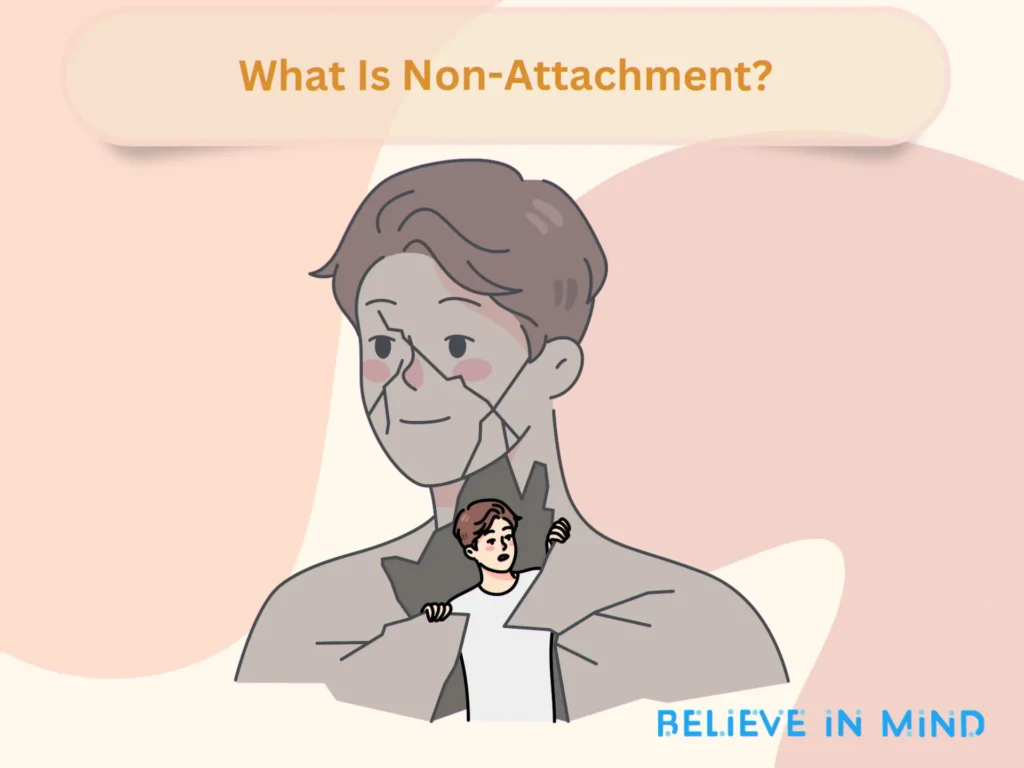
To achieve lasting inner peace, we must practice non-attachment. This means not clinging to people, objects, outcomes, or anything else. When we form attachments, we become dependent on external things for our happiness and sense of security. This gives away our power and leaves us vulnerable to suffering.
Non-attachment refers to an internal state of independence and freedom. It means we value people and things without needing to possess them. We can enjoy them when they’re present, but we remain whole when they’re gone. Non-attachment brings equanimity and wisdom. It allows us to flow with the changes in life without resistance.
We release the need to control situations and accept life as it unfolds. Non-attachment doesn’t mean indifference or not caring. We can fully engage in life and commit to people and causes we believe in. But we do so out of choice, not compulsion or fear of loss.
Non-attachment brings freedom from fear, worry, and restlessness. We find contentment within instead of chasing happiness in the external world. Our self-worth isn’t tied to having certain people or things in our lives. We love freely, without conditions or strings attached.
Cultivating non-attachment is a lifelong practice. Start by noticing the attachments in your own life. Make a habit of appreciating life as it is right now. Spend time each day nurturing your inner stillness. Non-attachment will gradually become your natural state. You’ll experience a deep sense of peace that remains unshakeable regardless of life’s inevitable changes. This is the peace that passes all understanding.
Learning to Let Go of Desires and Expectations
When we recognize that everything in the material world is ephemeral, we can release our grip on things and outcomes. We understand that possessions, relationships, achievements, status, and youth fade away. By relinquishing attachment to these impermanent parts of life, we shift our focus to what endures—our eternal spirit.
As we shed desires and expectations, we gain equanimity. No longer buffeted by the ups and downs of fortune and circumstance, we abide in calmness and clarity. Non-attachment brings lightness to being. Unencumbered by constant wanting and craving, we experience profound freedom and joy.
To loosen the bonds of attachment, reflect often on the transient nature of all things. Appreciate what you have in the present moment rather than longing for what is lacking or might be gained in the future. Practice mindfulness, staying focused on the here and now. Be willing to accept what comes your way with grace and gratitude.
Non-attachment is a journey, not a destination. Start by detaching from small things, like a favorite food or TV show. Then work your way up to bigger attachments, such as relationships, status, health, youth, and life itself. Make the intention each day to release one more thread binding you to desire. In time, the habit of non-attachment will become second nature.
As we travel this inward path, peace grows with each letting go. Our purpose transforms from chasing ephemeral pleasures to realizing our eternal nature. Through non-attachment, we awaken to the truth of who we really are: infinite awareness, sereneness, and freedom.
Living in the present moment
We must learn to live fully in the present moment. The past is gone, and the future is uncertain, but right now we are alive and breathing. focus our energy and attention on the here and now.
Appreciate the simple things.
Learn to notice the little details in your surroundings. Savor the aroma of your morning coffee, the chirping of birds, and the sunrise peeking through the curtains. Be fully aware of your senses and your breath. Find joy in simple pleasures and be grateful for another day of life.
Don’t dwell on the past or worry about the future.
While it’s important to learn from our mistakes and plan for challenges ahead, spending too much time worrying about what was or what will be prevents us from living in the present. The past cannot be changed, and the future is unknown. Accept what has already happened and let go of anxiety over what may come. Meet each moment with calmness and clarity.
Be fully engaged in daily activities.
How often do you find yourself rushing through the day on autopilot, your mind drifting to other thoughts? Make an effort to give your full focus to the task at hand, whether work or play. Notice the little details and be fully immersed in the experience. Appreciate each bite of a meal, maintain eye contact in conversations, and put away distractions when spending time with loved ones. Being fully present leads to greater contentment and deeper connections.
Living in the present moment, we open ourselves up to life’s beauty and wonder. No longer dwelling on past regrets or worrying about uncertain tomorrows, we are free to embrace today. Each moment is an opportunity to learn, love, and find inner peace. Make the choice to be present; your life is happening right now.
Finding Inner Peace Through Non-Attachment
To find lasting inner peace, we must practice non-attachment. This means not clinging to people, objects, outcomes, or experiences. When we attach ourselves to the external, we become dependent on things we cannot control. Our happiness and inner tranquility start to rely on having certain people in our lives, accumulating material possessions, achieving desired outcomes, or continually having certain experiences.
Let go of expectations.
We often attach ourselves to expectations—how we think things should be. We expect people to behave a certain way. We expect life to unfold according to our plans and desires. The problem is that people and life often do not conform to our expectations. When this happens, we become frustrated, angry, or sad. The solution is to release expectations. Do not demand that life look a certain way. Do not insist that people act how you want them to. Accept life and people as they are.
Find purpose within.
Do not attach your sense of purpose or worth to external achievements, accomplishments, or what other people think of you. Your true purpose and self-worth come from within. Focus on living according to your core values and priorities in life. Make decisions that align with your integrity and what really matters to you. Appreciate yourself for who you are—your character, principles, and spirit. This is the only purpose and worth that no one can take away from you.
Be grateful for the present moment.
Do not cling to the past or the future. The past is gone, and the future is uncertain. The only thing you have is the present moment. Be grateful for the simple pleasures the present provides. Appreciate the basic things you have right now: your health, loved ones, food, shelter, nature, opportunities, and freedoms. The present is a gift, so do not miss out on enjoying it by being overly attached to what has already happened or what may come. Find peace in the moment.
Releasing attachments and finding your worth from within leads to a state of inner peace that is not easily disturbed by life’s uncertainties and impermanence. This is a peace that comes from a deep place of wisdom, trust, and acceptance of yourself and life as a whole.
Read more
Cultivating Non-Attachment in Relationships
To find lasting inner peace, we must practice non-attachment in our relationships. This means not clinging too tightly to people or outcomes. When we grasp too firmly on relationships or impose expectations on others, it often leads to suffering. Loosening our grip on relationships allows them to unfold naturally. Rather than trying to control people or force relationships in a certain direction, we accept what is and allow others their freedom. We recognize that all relationships change and people come and go from our lives. Non-attachment brings openness and flexibility.
Non-attachment also reduces interpersonal conflict. When we are too attached to being right or getting our way, it creates tension and arguments. By letting go of the need to control, we become more open to compromise and finding common ground. Non-attachment leads to healthier communication and the ability to resolve disagreements in a peaceful manner.
Practicing non-attachment does not mean indifference or lack of care. We can deeply value our relationships while also recognizing their impermanence. Let go of expectations and allow relationships to simply be however they are in each moment. Appreciate the relationships currently in your life without clinging to or grasping for more. Focus on the quality of your connections rather than trying to control or possess people.
Cultivating non-attachment is challenging, but it offers profound rewards. Our relationships become freer and more joyful. We no longer worry so much about loss or change. A deep sense of inner peace arises from accepting life as it is rather than demanding it conform to our desires. Non-attachment is the secret to lasting contentment and harmonious relationships.
Non-Attachment in Buddhism and Other Spiritual Traditions
We all seek lasting inner peace and contentment. According to many spiritual traditions, non-attachment is the key. When we cling too tightly to people, possessions, and outcomes, we suffer. By releasing our grip, we find freedom.
Buddhism teaches that attachment leads to suffering. When we grasp at fleeting pleasures, relationships, and material goods, we set ourselves up for pain when the inevitable changes come. By practicing non-attachment, Buddhists cultivate equanimity and peace. They appreciate life’s joys but hold them lightly, knowing nothing lasts forever.
Other faiths also extol the virtue of non-attachment. In the Bhagavad Gita, Krishna tells Arjuna to perform his duties without attachment to outcomes. Christians are taught not to store up treasures on earth but to focus on eternal rewards. Taoism encourages flowing with the natural changes in life instead of resisting them.
How can we practice non-attachment in our own lives? A few tips:
- Cherish your loved ones, but accept that all relationships change and end.
- Enjoy material comforts in moderation without clinging to them for happiness.
- Do your work with diligence, but release expectations about rewards or praise. Your worth isn’t defined by outcomes.
- Accept that life constantly changes. Practice flexibility and adaptability instead of rigidly adhering to plans or habits.
- Find your security and self-worth within, rather than chasing external validation or status. True peace comes from within.
- Surrender control and trust the process. So much anxiety comes from trying to control the uncontrollable. Learn to flow with life.
Non-attachment is a challenging but rewarding path. With practice, we can loosen our grip on fleeting pleasures and find lasting inner peace. By embracing change and impermanence, we discover how to love life without clinging to it. This is the secret of non-attachment.
Tips for Reducing Attachment in Daily Life
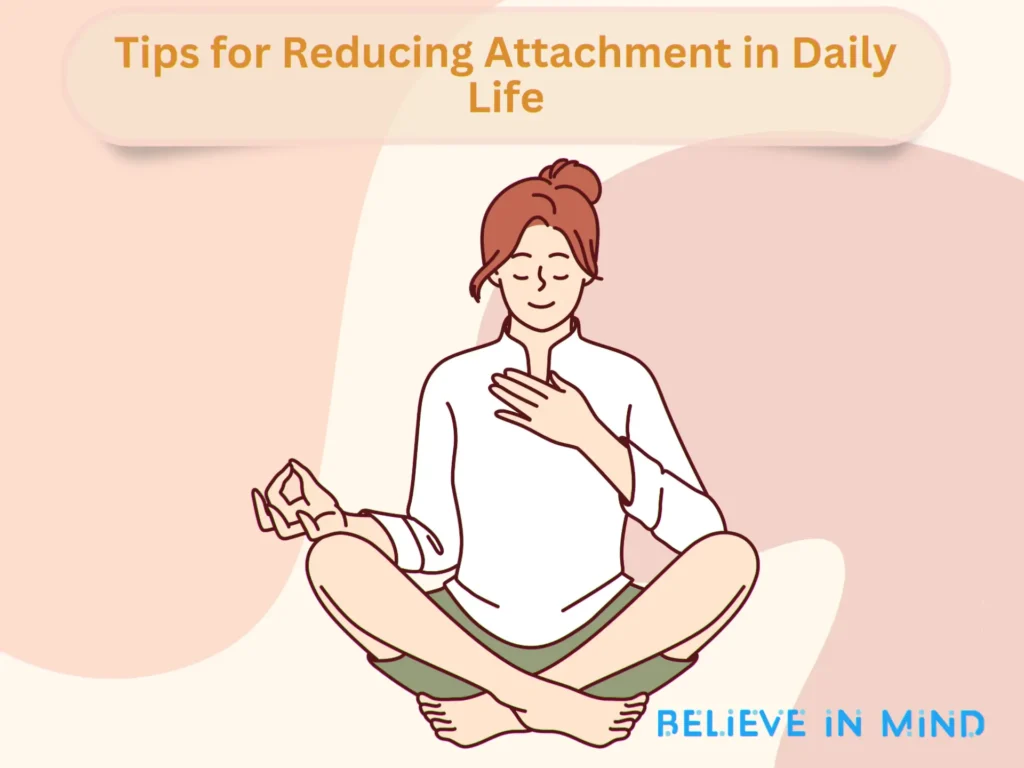
To find inner peace, we must work to reduce our attachments in life. Here are some tips to help lessen attachment in your daily routine:
- Practice mindfulness. Spend time each day being fully present in the moment. Appreciate the simple pleasures in life and be grateful for what you have. This helps shift your mind from lack and desire to contentment.
- Limit social media. Social media fuels comparison and fosters a sense of inadequacy. Take breaks from platforms like Facebook and Instagram to avoid mindless scrolling and coveting the curated lives of others.
- Cherish experiences over material goods. Make memories rather than accumulate more stuff. Travel, take a class on something new, and spend time with loved ones. Experiential pleasures often lead to more lasting joy than lavish possessions.
- Release expectations. Learn to accept life as it unfolds rather than cling to preconceived notions of how things “should” be. When we are overly attached to outcomes, we suffer. Practice flexibility and patience.
- Serve others. Do small acts of kindness each day without expectation of reward or return. When we turn our focus outward to help and uplift others in need, we transcend self-centered concerns and attachment.
- Spend time in nature. Go outside and immerse yourself in the beauty around you. Interacting with nature helps shift your perspective to one of connection rather than clinging. You realize you are a small part of something greater.
Releasing attachment is a journey, not a destination. But with regular practice of mindfulness and compassion, we can loosen the grip of desire and open our hearts to the peace that comes from non-attachment. Inner calm is found not by grasping but by letting go.
Read more
The Freedom of Non-Attachment
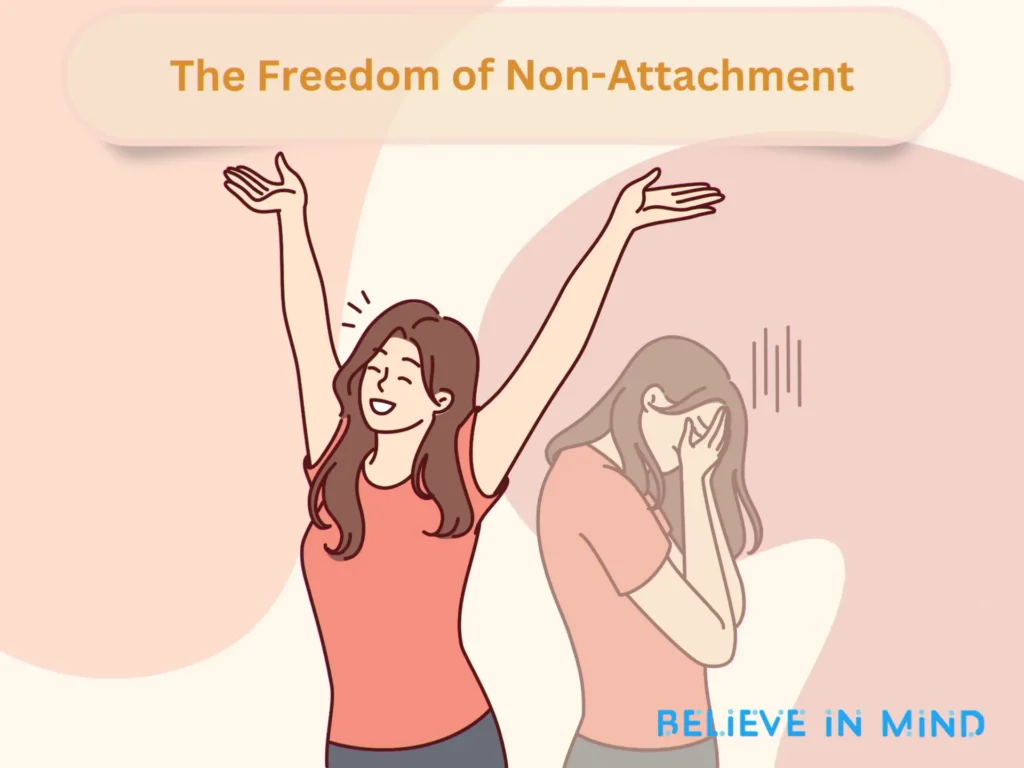
As spiritual seekers, we must learn the art of non-attachment. When we cling too tightly to people, possessions, and outcomes, we suffer. Attachment breeds fear, anxiety, and greed. It keeps us chained to the ego’s desires and aversions.
By practicing non-attachment, we free ourselves from these bonds. We release our grasping hold on the transient things of this world. We accept that nothing lasts forever and find peace in the present moment.
Non-attachment means we value relationships and things for what they are—temporary. We appreciate them while they last instead of desperately trying to make them permanent. We accept that the only constant in life is change.
When we master non-attachment, we gain a lightness of being. No longer dragged down by expectation and control, we flow with the river of life. We embrace each experience as it comes, then gracefully let it go to move on to the next.
Detachment brings tranquility and calm. By loosening our grip, we open our hands to receive life’s gifts. We see the world with fresh eyes, unclouded by desire. Beauty unfolds all around us, moment by moment.
Non-attachment takes practice. Start by noticing when you feel grasping or clinging. Breathe and relax your hold. Appreciate the good in your life without needing to possess it. Find contentment in the simple and transitory pleasures each day brings.
Let go of past regrets and future worries. Release attachment to your ego and the need to control outcomes. Make peace with uncertainty. Place your trust in something greater than your little self.
Freedom comes when we realize there is nothing to lose and nothing to gain. Non-attachment allows us to float through life with a heart unburdened yet fully open, receiving each experience as a gift and then releasing it with gratitude and grace. This is the secret of lasting inner peace.
How to Avoid Getting Attached
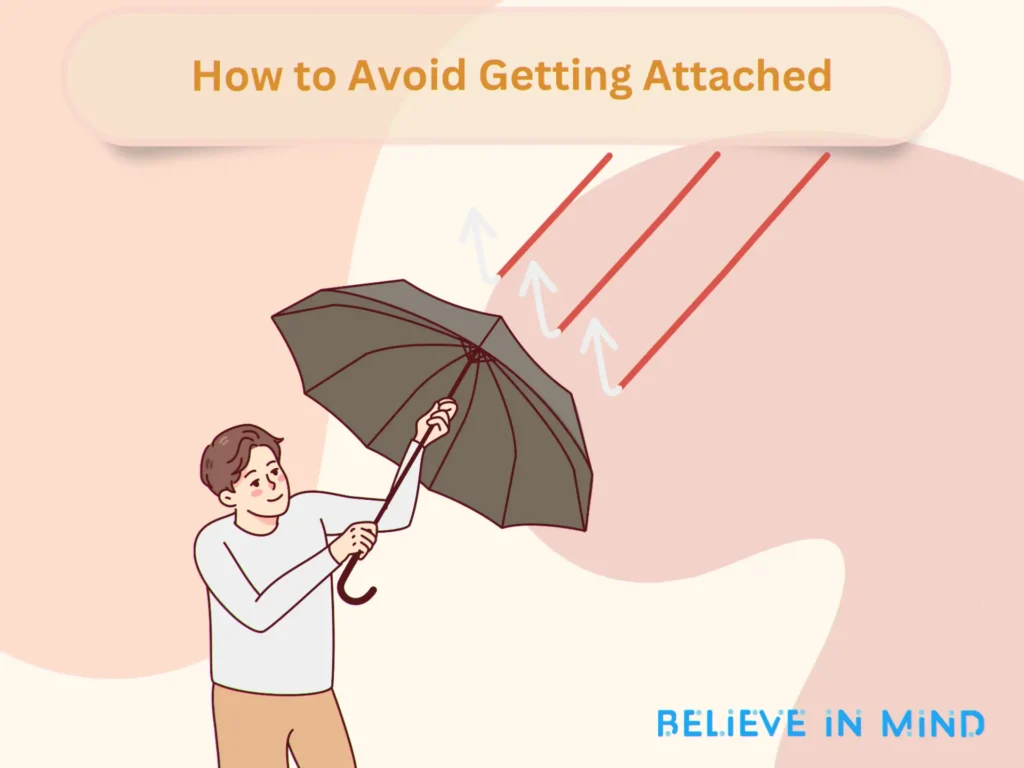
To find lasting inner peace, we must avoid attachment. This means not clinging to people, objects, outcomes, or ideas. When we grasp onto the impermanent, we suffer.
1. Let go of expectations.
Do not become attached to how you think things “should” be. Life unfolds in unexpected ways. Rather than having rigid expectations, cultivate an open and flexible mindset. Meet each moment with curiosity and wonder.
2. Value experiences over possessions.
Material goods are fleeting, but the memories we make with others endure. Cherish each encounter and opportunity to connect. Express gratitude for what you have, rather than always wanting more.
3. Accept change as inevitable.
The only constant in life is change. Do not resist it or wish for things to remain the same. Embrace the impermanence of all things with courage and grace. Appreciate each moment as a gift, however temporary.
4. Focus on relationships, not outcomes.
Do not become overly invested in results or attached to ideas of success or failure. What matters most is how we treat one another along the journey. Nurture your connections with compassion and care.
5. Find meaning through growth.
Do not cling to a static sense of identity or purpose. We are continually evolving beings. Our ultimate meaning and joy come through learning, expanding our minds, and developing our character and wisdom over time. Growth is the antidote to attachment.
By loosening our grip on the fleeting and impermanent, we open ourselves to deeper peace and contentment. Freedom from attachment allows us to fully experience each moment as it arises. Our happiness depends not on what we have but on our capacity to appreciate what we have been given. This is the secret of non-attachment and the key to lasting inner calm.
Don’t let yourself get attached to anything.
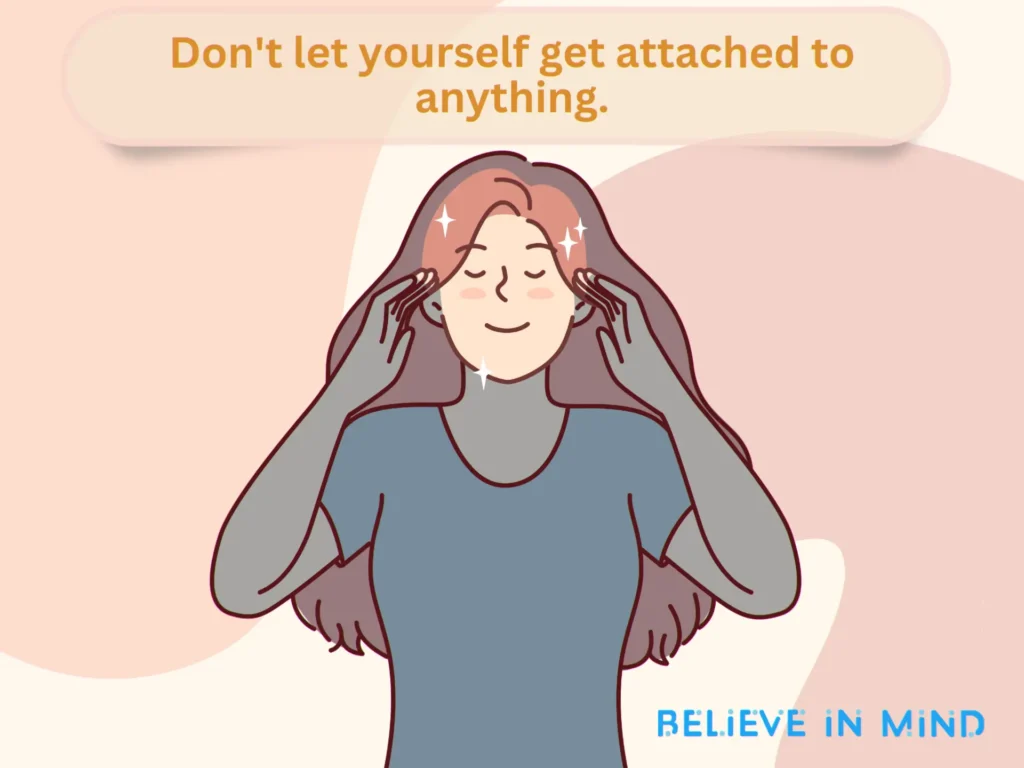
We all desire lasting inner peace, yet so often it eludes us. Why is that? One of the biggest obstacles is attachment. When we cling too tightly to people, possessions, beliefs, or outcomes, we set ourselves up for suffering.
Let go of attachments.
As spiritual seekers, we must practice non-attachment. This means learning to let go of rigid expectations and loosening our grip on the things we think we need to be happy. Attachments are impermanent and constantly changing, so lasting peace cannot be found there.
When we release attachments, we free ourselves from dependence on external factors and open up to the peace that is always within us. We realize that happiness comes from living in alignment with our deepest values—love, compassion, and service—not from clinging to fleeting pleasures or outcomes.
Find freedom in non-attachment.
Non-attachment brings freedom—the freedom to enjoy life as it is instead of constantly grasping for more. We can embrace each moment with an open heart when we are not chained by desire or aversion. Relationships become deeper as we learn to love without clinging. Decisions become clearer when we are not clouded by fear of loss.
Discover your true self.
Ultimately, non-attachment allows us to connect with our true selves, the pure awareness that exists beneath the ego and its attachments. When we rest in this place of being, we know profound peace. We see that we have always been whole and complete, and lasting happiness is our very nature. Through the practice of non-attachment, you can transcend the illusion of separation and awaken to the peace that passes all understanding. This is the key to lasting inner calm in a constantly changing world.
Read more
Conclusion
Through practicing non-attachment, we can find an inner peace that withstands life’s ups and downs. By letting go of our tight grip on people, possessions, and plans, we open our hands to receive life’s beauty. Our happiness comes from within, not from what we have or what happens to us. With non-attachment, we find freedom—freedom from desire, freedom from expectation, and freedom to love unconditionally.
This freedom allows us to live fully in each moment and find contentment in the simple things. Though the path is challenging, non-attachment leads to an inner joy independent of circumstance. Our peace comes not from clinging but from letting go. By releasing attachment, we find in ourselves an eternal source of strength, wisdom, and bliss. This is the peace we have been searching for all along.
References
- “Why Do I Get Attached So Easily?” – 7 Reasons (and Solutions) Posted by Samantha Uslubas
- 9 Ways Attachments Play Out In Your Life To Make You Suffer by Barrie Davenport
- The Zen Habits Guide to Letting Go of Attachments By Leo Babauta
- Nonattachment (philosophy) From Wikipedia, the free encyclopedia

Let’s boost your self-growth with Believe in Mind.
Interested in self-reflection tips, learning hacks, and knowing ways to calm down your mind? We offer you the best content which you have been looking for.





